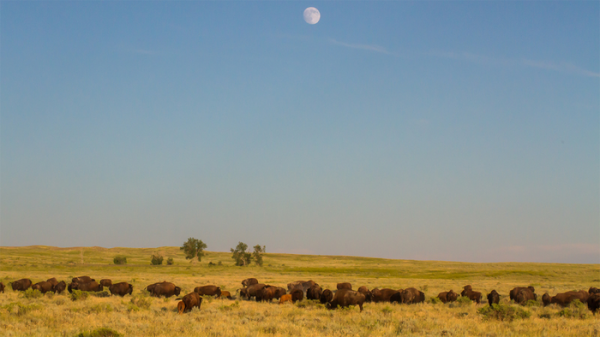It epitomizes the Great Plains in spirit and in form: a 2,000-pound tank on hooves, cloaked in shaggy winter-tested coat, capped by horns acting as warning and weapon.
Even its scientific name, Bison bison bison, seems to conjure an echo worthy of its majesty. Still, the implacable profile of the Plains bison — the national mammal of the United States and largest on the continent — belies the vulnerability in its history, which saw its legions decimated from tens of millions to just a few hundred in the span of a few colonial centuries.
Conservation efforts have pushed its number back to roughly 20,000, and its status from endangered to near-threatened. But a recent study led by the University of Nebraska–Lincoln’s Nic McMillan hints that the ongoing conservation of the Plains bison will demand accounting for the climate — especially the number of scorching days and powdery landscapes — it encounters moving forward.
Read more at: University of Nebraska-Lincoln
Plains bison graze beneath the moon of an Oklahoma sky. A recent analysis of GPS-tracked herds in the state found that the once-endangered mammal responds to temperature and severe drought in ways that should inform its long-term management. (Photo Credit: Deniz Bertuna / Anthony Cook)


